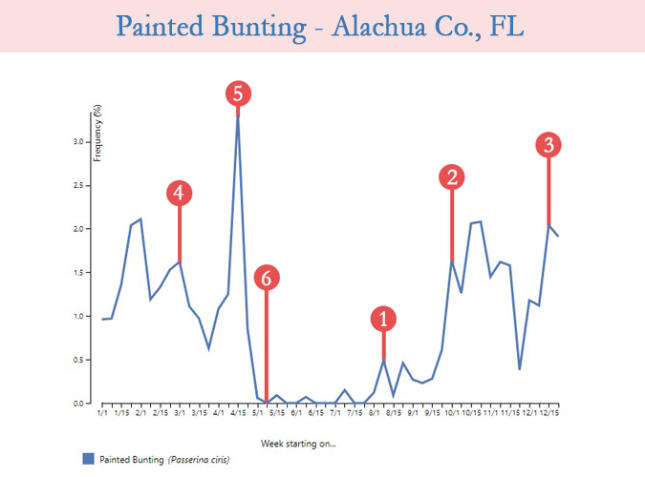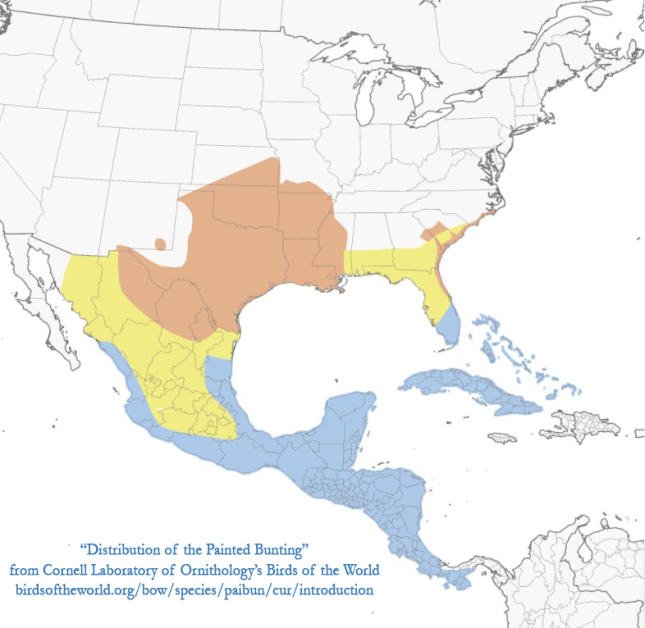The Status and Distribution of the Painted Bunting in Alachua County, FL

Follow along from point 1 to point 6 as I explain how this chart shows you everything you need to know about the status and distribution of the Painted Bunting (PABU) in Alachua County, FL over the course of a year. I'm writing this article on September 9, 2020 and the early uptick in PABU that occurs every August still feels pretty current. That's why Point 1 is where it is. For the purposes of trying to make the PABU a feeder bird in your yard, just remember this - white proso millet is a MUST. One of the best things about millet, though, is that it does not usually require a new feeder. Most of the time, you can increase your chances of seeing a PABU at your feeder by mixing millet into your all-purpose blends in one or more of your all-purpose feeders.
Point 1
PABU breed in two distinct areas in North America including a swath of coastal habitats from the SE coast of North Carolina to Brevard County, Florida. Movement southward out of this breeding range begins to occur around the second week of August. There is a corresponding uptick, albeit very slight, in feeder observations in Alachua County around the second week of August. Feeder activity is usually fleeting at this time with very little, if any, apparent settling into a consistent overwintering pattern.

Point 2
A more significant peak in activity occurs once most birds have left their breeding range and begin to settle into overwintering areas more consistently. This is when known feeder hotspots begin to experience daily feeder activity.
Point 3
The migratory peak that begins in late September lasts in mid-November the end of which corresponds with a sharp but very short-lived decline in feeder activity and it observations in the field. Activity at a few feeder hotspots does not see a proportionate decline at this time. Activity picks up for the rest of the overwintering period around the first week of December.
Point 4
The more consistent period of overwintering activity finally begins to decline beginning around the first week of March. While overall numbers might decline, feeder activity can actually intensify at this time as birds begin to fuel up for molt and migration.
Point 5
Birds from throughout overwintering range as far south as Costa Rica, eastward throughout the Bahamas, and in the Antilles begin to migrate through Peninsular Florida. We experience a "last hurrah" as feeder activity can spike again in the first two weeks of April.
Point 6
The true end of PABU season is in the first or second week of May every year when almost every bird has returned to its breeding range far from us.

